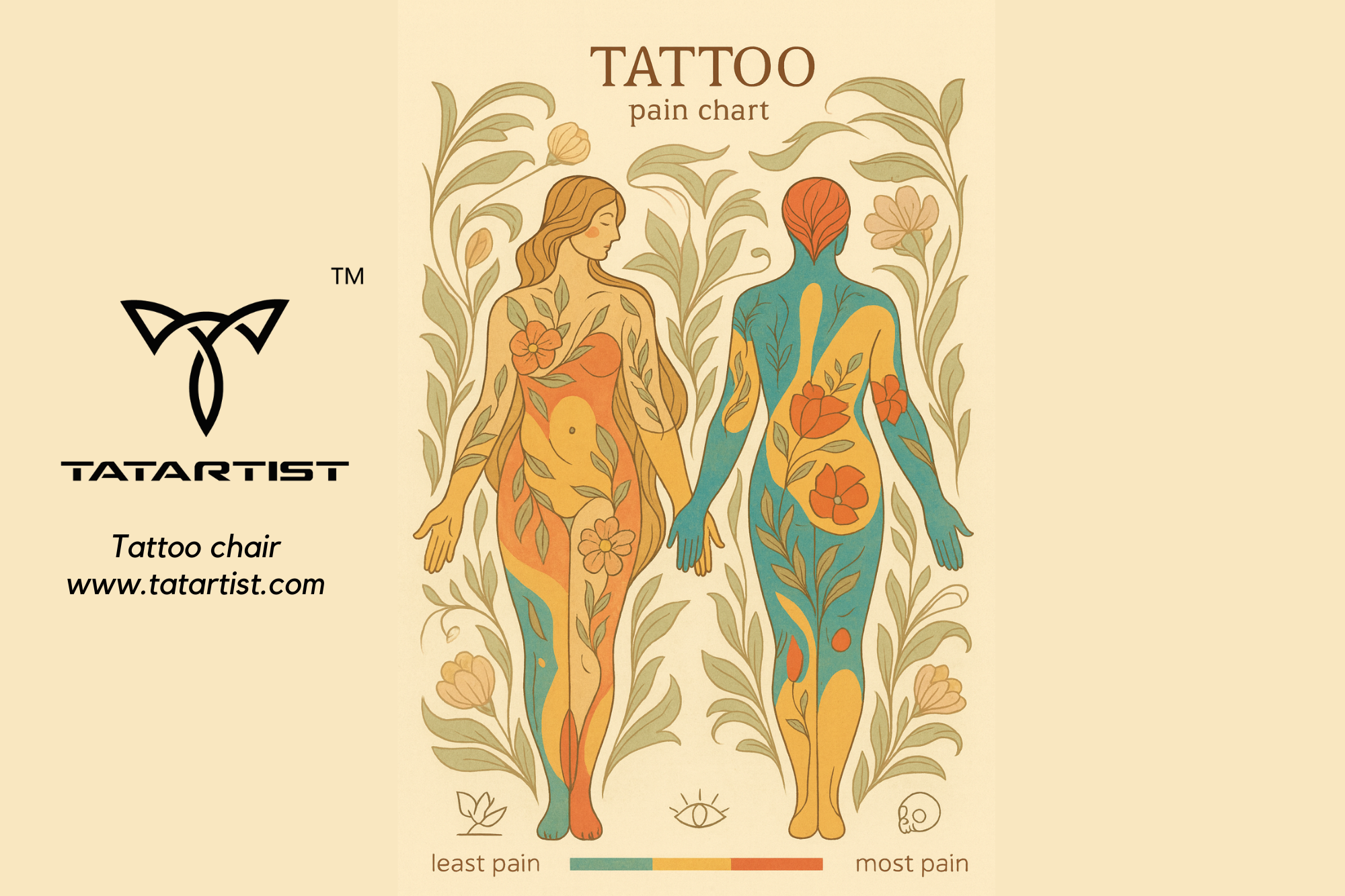TATARTIST Tattoo TIPS
Pain isn't a concern; creating a comfortable and secure environment is key. Let's discuss tattoo preparation.
1. When the client asks, "Will it hurt?"
Every tattoo artist has heard this question: "Will it hurt in this spot?" It's the most common question first-time tattoo clients ask. While pain is an inevitable part of the tattoo experience, it's not the biggest obstacle.
The real question behind their concerns is, "Will I be okay?"
In fact, at this point, you need to provide clients with a tattoo pain scale to reduce their stress.

2. Pain is physical—and psychological.
Tattoo pain doesn't just come from the needle. It stems from tension. A cluttered room, stiff furniture, and awkward posture can all exacerbate discomfort. Clients are already anxious when they enter the tattoo shop. If they have back pain, a sprained wrist, or are exposed to the cold, the pain can spike.
Your workspace can work for you or against you.
Stress affects muscle tension, making it harder to stay still. Unstable posture leads to restlessness and fatigue in the artist. Distracting environments undermine focus, trust, and flow.
A quiet, ergonomically supportive environment tells your client, "You're in good hands." This trust allows their body to relax and their attention to focus on their art.
3. Tattoo chairs provide more than just support.
A good tattoo chair should be not only sturdy but also supportive, both physically and mentally.
Think about it: when your client sits in a professional, comfortably padded, and adjustable chair, their first impression is already much more positive.
Take Tony, for example. He recently upgraded to the TATARTIST TA-TC-11. His client, a young woman, was visibly anxious when she first experienced the product. But once she settled into the chair, her legs raised, and her arms supported, she visibly relaxed.
She actually said, "This environment is so relaxing and calming." And she sat there for three hours without flinching. "
Tony isn't just selling a design, he's delivering an experience.

4. Targeted Support
Not all pain points are created equal. Every body part requires different support.
Spine/Back Tattoos: Clients need lumbar support and a reclined position. An adjustable headrest is key.
Inner Arms/Biceps: Flexible armrests that swivel and lock to prevent muscle strain.
Ankles/Feet: Stable legs are more important than open space. Wobbly legs = uneasy clients.
A versatile chair like the TATARTIST covers every angle. Artists can precisely position the body, which means:
* More precise ink placement
* Less client movement
* Less artist fatigue
This type of equipment isn't a luxury, it's a necessity.
Visit Explore the complete line of artist-approved equipment at [TATARTIST.com]

Conclusion: Comfort drives conversions
When a nervous client walks in, your equipment is like a first handshake. Before you even show them your portfolio or prepare your needles, they're already asking themselves:
"Do I trust this person to permanently tattoo my skin?" "
Comfort answers that question.
* The right chair makes them feel grounded.
* The right lighting makes them feel valued.
* The right setup makes them feel respected.
You're not just solving pain.
You're building trust. And trust is sales.
Ready to upgrade your tattoo studio? Explore the best-selling tattoo chairs, armrests, and workstations built by and for tattoo artists. Because your art deserves more than a rickety stool.
Related Links:
* [Ergonomic Tattoo Chairs](https://www.tatartist.com/collections/tattoo-chairs)
* [Tattoo Studio Setup Tips](https://www.tatartist.com/blogs/news)
* [Tattoo Tips for Nervous Clients](https://www.tatartist.com/blogs/tips)
Keywords: Tattoo Pain Chart, Tattoo Chair Comfort, Ergonomic Tattoo Furniture, Best Tattoo Setup, Tattoo Tips for Beginners, Tattoo Parlor Equipment, How to Ease Tattoo Pain, Tattoo Artist Gear

